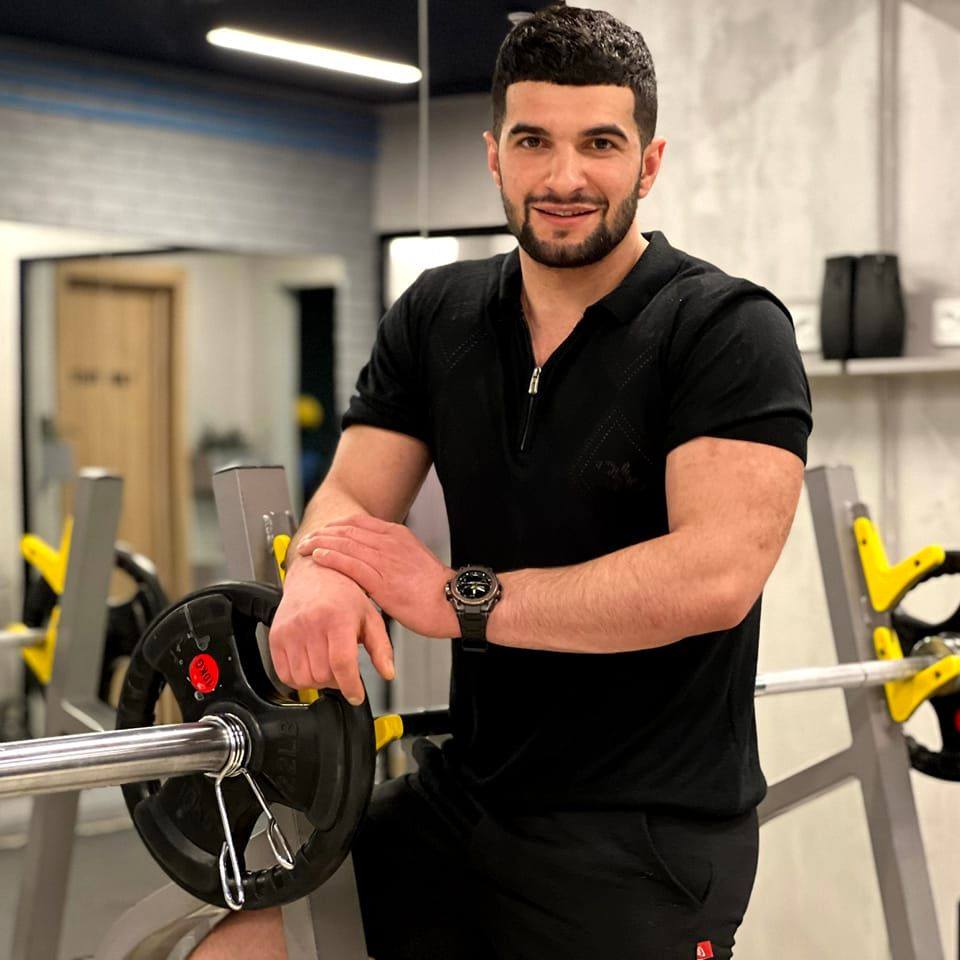James Smith Macro Calculator is a tool that helps individuals determine their daily macronutrient requirements based on their unique circumstances. These calculators take into account factors such as age, weight, height, activity level, and fitness goals to provide a personalized recommendation for the ideal intake of carbohydrates, protein, and fat. The james smith calculator app provides an estimate of the daily intake of macronutrients needed to maintain a healthy weight, support body functions, and promote overall health.
Macro calculators are tools designed to help individuals determine their daily macronutrient requirements based on factors such as age, weight, height, activity level, and fitness goals. Macronutrients, also known as macros, include carbohydrates, protein, and fat, and are essential for maintaining optimal health and wellness. Is james smith calculator accurate? In this article, we will discuss what macro calculators are, how they work, and their benefits.
How does a Macro Calculator Work?
Macro calculators use a mathematical formula that considers several factors, including:
- Body Weight: The amount of macronutrients required by the body is dependent on the individual’s weight. The more a person weighs, the more macronutrients they need.
- Activity Level: Individuals who are more active require more macronutrients to maintain energy levels and support muscle growth and recovery.
- Age: As individuals age, their macronutrient requirements may decrease.
- Gender: Men generally require more macronutrients than women due to their higher muscle mass.
- Goals: The calculator considers an individual’s goals, such as losing weight or building muscle, when determining macronutrient requirements.
Based on these factors, the James Smith Calculator provides an estimate of the daily intake of carbohydrates, protein, and fat required to meet an individual’s needs. The james smith fitness calculator also recommends the sources of each macronutrient that should be included in the diet, such as whole grains, fruits, vegetables, lean proteins, healthy fats, and dairy products.
Benefits of Using a Macro Calculator
Macro calculators offer several benefits to individuals looking to optimize their macronutrient intake. These include:
- Personalized Nutrition Plan: Macro calculators provide a personalized nutrition plan based on an individual’s unique circumstances, including age, weight, and activity level. This ensures that the recommended macronutrient intake is tailored to an individual’s specific needs.
- Efficient: Macro calculators are efficient and can save time. Instead of researching the ideal macronutrient intake or consulting a nutritionist, individuals can use a macro calculator to determine their macronutrient needs.
- Improved Performance: Consuming adequate amounts of macronutrients can help individuals perform better during exercise or physical activities. Macronutrients are essential for providing energy, building and repairing muscles, and reducing muscle soreness.
- Weight Management: Balancing macronutrient intake can help individuals manage their weight by promoting satiety and reducing hunger. Consuming a balance of carbohydrates, protein, and fat can help individuals feel full for longer periods, which may lead to consuming fewer calories.
- Promotes Overall Health: Adequate macronutrient intake is essential for overall health, including cardiovascular health, blood sugar control, and immune function.
Limitations of Using a Macro Calculator
While macro calculators offer several benefits, they also have some limitations. These include:
- Generalization: Macro calculators provide a general estimate of macronutrient intake based on certain factors such as weight, age, and activity level. However, they do not consider other factors that may affect macronutrient requirements, such as medical history or genetics.
- Inaccuracies: Macro calculators may provide inaccurate recommendations for some individuals. For example, individuals with medical conditions or injuries.
Somatotypes and Sport Selection – Why You Don’t Need a New Diet
The simple truth is: you do not need a diet; you already have one. Now, depending on a few things, I can assume it may not be serving you as you want or would expect it to. For instance, if you’re carrying more fat than you’d like, I’m afraid your diet contains too many calories for the amount you move. Should the opposite be the case – i.e. you seek weight gain – then I can tell you that your diet does not contain adequate calories.
That’s thermodynamics – oversimplified, of course. But fundamentally, that’s the truth that a lot of people dance around when talking about dieting. Over the years, people have thrown around different diets for this benefit and that benefit.
Not only that, they have insinuated that there is even a diet for a certain ‘body type’. So straight away your thoughts are derailed from what we’ve known for a long time about energy in vs energy out, and you’re led on to a new path of thinking Okay, of course, it must be HOW I am eating, not HOW MUCH I am eating.
The three main and most often mentioned body types are referred to as mesomorph, endomorph and ectomorph – collectively known as somatotypes. These are very popular in advertising on social media. Keep in mind that communicating on social media is like talking to people who are in another conversation already, so you need something snappy to pull their attention away from what they’re doing. ‘Body type’ propaganda is one of the most popular of these, I’d say. American psychologist William Sheldon developed a concept in the 1940s whereby he categorized the human physique into three fundamental elements, which he termed ‘somatotypes’.
Let’s begin with a mesomorph, which is typically what you’d consider an ideal physique by societal norms: a good balance of muscle without too much fat (imagine ‘meso’ as ‘middle’). Then, to the left, imagine an ectomorph, usually classified as tall and slim – someone who struggles to gain fat or muscle. Finally, there’s endomorph (think ‘end’ – end of the spectrum, left to right). An endomorph gains muscle easily, but also fat, so they’re usually of a thicker physique, let’s say.
There’s been speculation about having the right macronutrient split for your ‘body type’ in mainstream media, but I’d like to let you know these are not physiological but personality traits. Boom, mind blown. Psychology has been turned into physiology to get you to click on an advert. I’d potentially make assumptions based on someone’s body type, but I would never let it define them or what they’re able to accomplish. For instance, let’s say I have a consultation with Dave.
He walks into the gym, I notice he’s six foot four and very slim. I may start to theorise that perhaps his physiology has a part to play in his slim physique, but this is just a theory; it could also be partly to do with his psychology. Should Dave demonstrate mannerisms that could lead me to believe he’s slightly anxious, I might conclude before I’ve even shaken his hand that he has a fairly low appetite (typically, I’ve noticed people who come across as a bit anxious tend to eat less than others), consciously or not. It’s then for me, the coach, to talk to him about his eating habits and to ask if he sometimes forgets a meal.
You become almost like a Sherlock Holmes as a PT, and you need to find out all sorts about your clients. We all have slim friends who could fit into the category of the ‘ecto’ somatotype, and we notice they always eat whatever they like when we have meals with them. Dave eats burgers and chips all the time, but still manages to stay so slim.
I’ve found over the years that people are vastly different in their eating habits and psychology. The same people who can get away with what we perceive to be a very calorie-dense diet often forget to eat. Someone like myself can’t even comprehend what it would be like to forget a meal.
I think about food from the second I wake up to the second I go to bed. That’s arguably a psychological differentiator, not a physiological one, if you think about it. Height also plays a role: the longer someone’s levers are, the more space there is for muscle tissue to fill. Imagine, if you will, a beach with 250 deck chairs on it.
Now, a big beach with 250 deck chairs may look desolate, but a small, secluded beach may seem busy and cramped with that many chairs on it. The point I am making is that sometimes muscle appears to be larger or denser on smaller levers – those who are vertically challenged, for instance.
So being six foot four, Dave has long levers, and therefore needs many metaphorical deck chairs to fill his metaphorical beach. Dave may also forget to eat for large parts of his day, so when I ask him his goal and he says, ‘I want to gain a bit of muscle,’ I need to be ready not to just say to him, ‘Eat more.’ I need a strategy in place to work alongside his current eating habits – something as simple as an alarm on his phone reminding him to eat or drink is so simple, yet so powerful. Let’s also not rule out that Dave may turn over nutrients very fast and have a faster ‘metabolism’ than most. So we’re looking at long levers, a small appetite, and a one-size-fits-all plan just won’t cut it here.
James Smith-Personal Fitness Trainer

James Smith is a well-known personal trainer and fitness coach based in the UK. He has gained a large following on social media, particularly on Instagram and YouTube, for his straightforward approach to health and fitness, often challenging mainstream ideas and advocating for evidence-based practices.
James is known for his no-nonsense approach to training and nutrition, emphasizing the importance of consistency and adherence to a sustainable lifestyle rather than quick-fix solutions. He has written several books on fitness and nutrition, including “Not a Diet Book” and “The Grind Bible”, which have become popular among his followers.
In addition to his online presence, James runs a coaching and training business, where he works with clients to help them achieve their fitness goals through customized workout and nutrition plans. He is also a frequent speaker at fitness conferences and events, where he shares his expertise and insights on the latest trends and practices in the industry.
